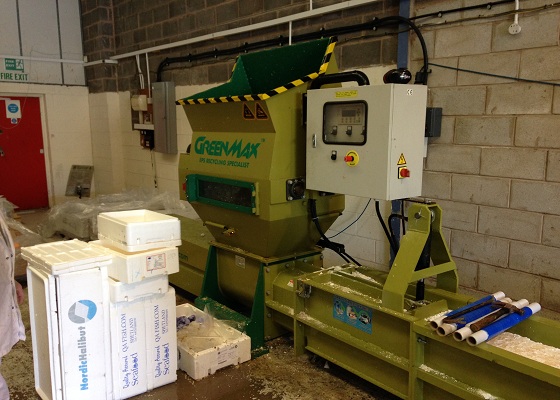In the United States, many cities have considerable awareness of environmental protection and have developed a series of strong curbside recycling programs. People can throw unwanted wastes into blue bins, but EPS foam isn’t accepted in the blue bins. EPS foam is a very special material, which is difficult to degrade naturally in hundreds of years, but it can be recycled completely. The United States consumes a lot of EPS food plates every year, but only 136.8 million pounds of EPS foam in 2019. In view of this situation, EPS foam compactor is designed.
These plates can be washed with water and then treated with EPS foam compactor. The machine can cut EPS plates into small pieces in a hopper, then use cold pressing technology to compress these small pieces, and finally use screw extrusion. There is no pollution in the whole process, and the operation of the machine will not be affected by the water after cleaning. With a simple operation, these discarded plates will be turned into compact blocks, which is only 1 / 50 of the original volume.
EPS foam plates should be regarded as 100% recyclable materials and should not be excluded from the recycling plant. It can also be recycled in the recycling system. GREENMAX, as one of the representative companies of designing EPS foam compactor, has studied the cleaning line especially for EPS plate recycling, which takes cleaning plates and compressing EPS as the whole process.
At the same time, GREENMAX has established a circular economy system integrating selling machines, recycling EPS foam, buying back pressing blocks and manufacturing plastic particles. It gives EPS plates rebirth. EPS plates are just waste placed in the wrong place. Recycling them is a small step, but a big step to protect the environment.
